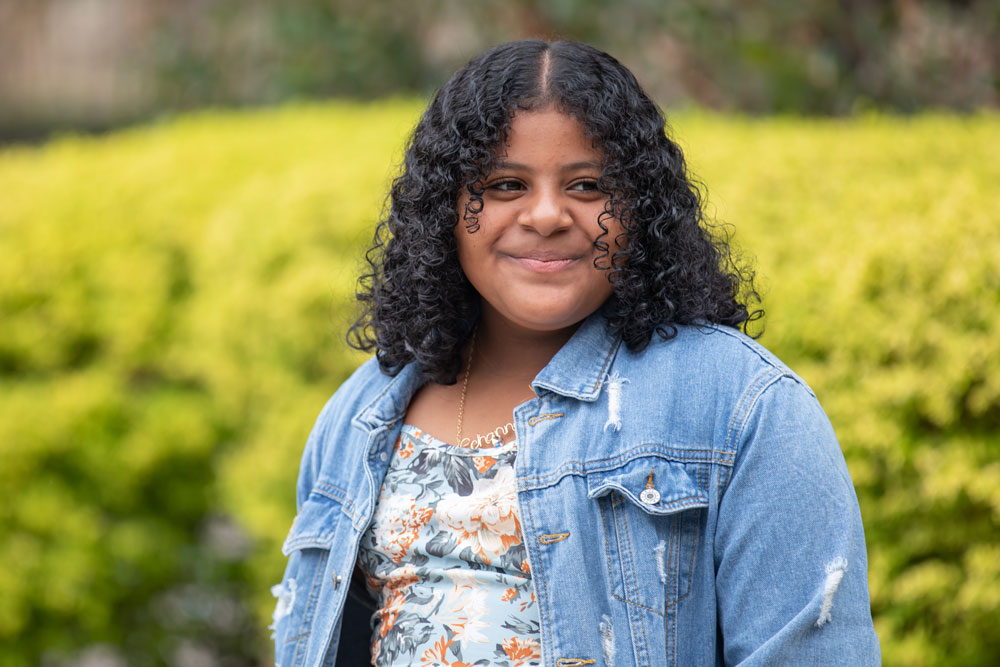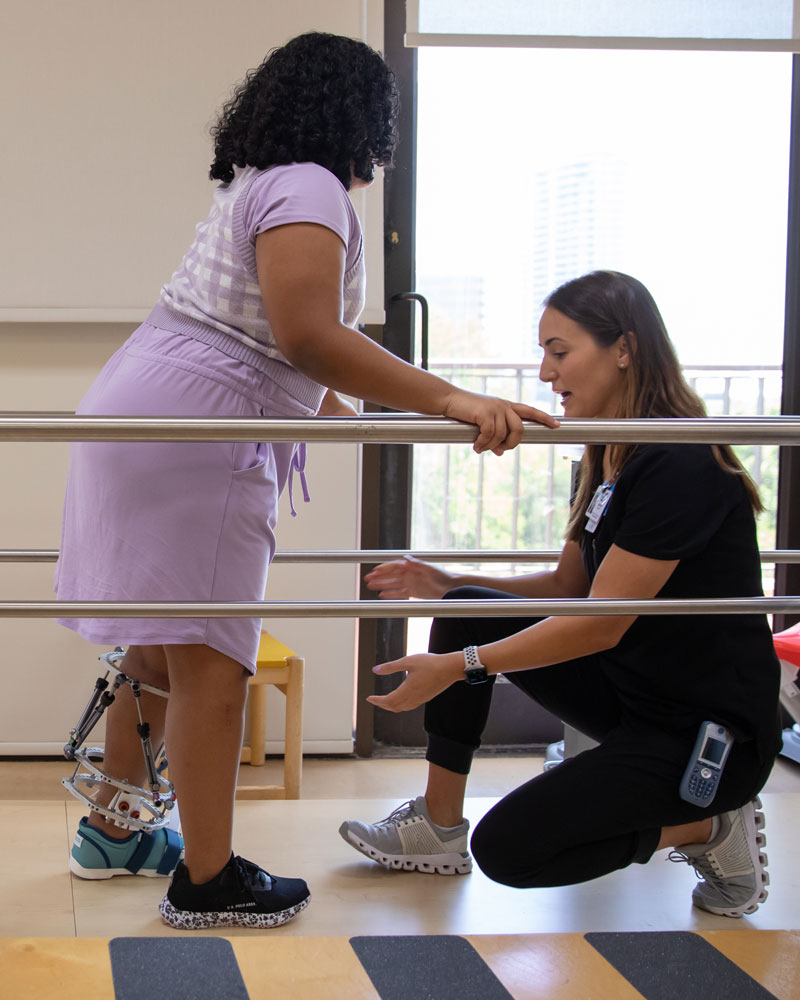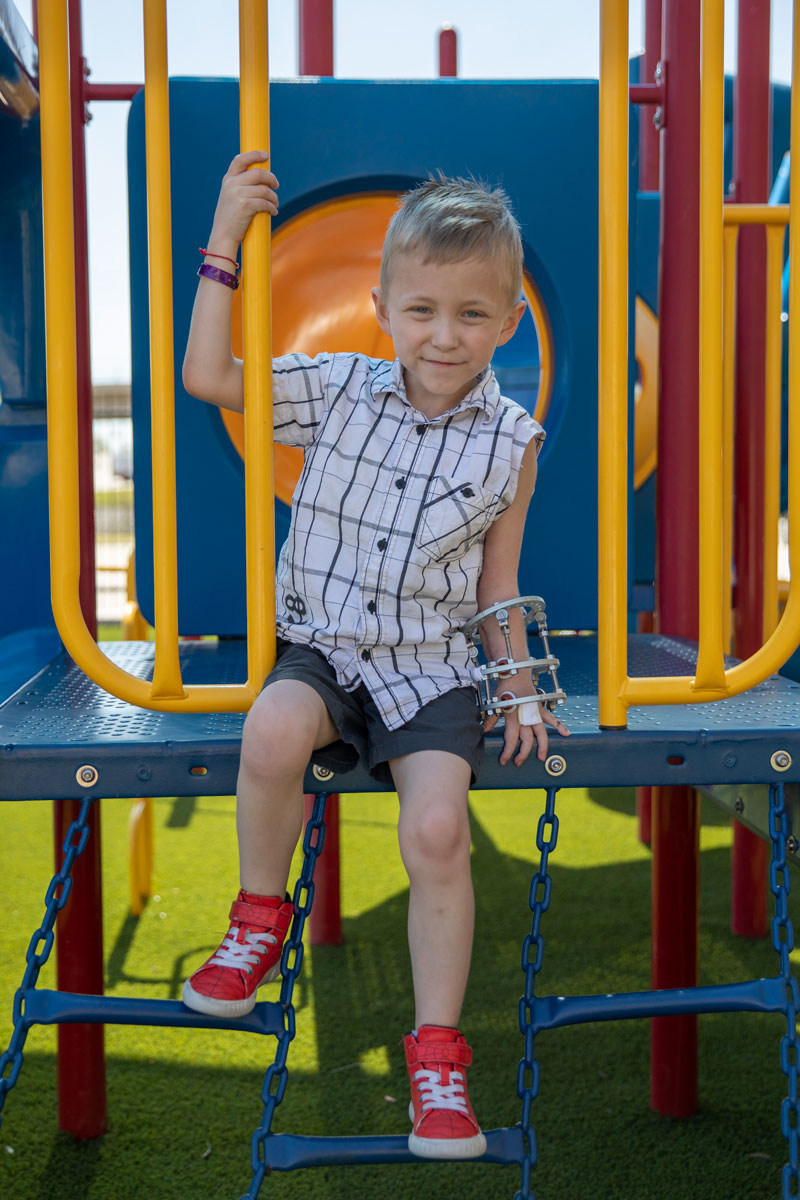Limb Lengthening

What is Limb Lengthening?
Limb lengthening is a surgical procedure used to lengthen bones or replace segments of missing bone in a patient’s arms or legs. Patients may need this form of treatment if they have a limb length discrepancy or deformity. This can be caused by congenital, developmental or post-traumatic injuries that lead to curvature, shortening or rotational problems in the bones.
Our Center for Excellence in Limb Lengthening and Reconstruction (CELLR) team is known around the world for their expertise in this field. They travel nationally and internationally to teach other surgeons about the devices and treatment methods used at Scottish Rite for patients with limb discrepancies and deformities.
In addition to care from our expert surgical team, patients going through limb lengthening treatment are supported by a multidisciplinary group of specialists. This includes nurses, physical and occupational therapists, psychologists, social workers and child life specialists.
Conditions Associated with Limb Lengthening
Conditions commonly treated in associaton with limb lengthening include:
- Blount’s disease
- Bone fractures and other traumatic injuries
- Bowed legs (genu varum) and knock-knees (genu valgum)
- Brachymetatarsia
- Clubfoot
- Congenital femoral deficiency
- Congenital pseudoarthrosis of the tibia
- Fibular hemimelia
- Madelung’s deformity
- Posteromedial Bowing of the Tibia
- Radial club hand
- Tibial hemimelia
- Upper extremity limb length
Types of Limb Lengthening Treatments
There are several types of limb lengthening treatments available. Each technique has advantages and disadvantages that your physician will discuss with you. More than one stage of treatment may be required for extensive limb lengthening.
Nonsurgical options – some children with minor leg length discrepancies may need only physical or occupational therapy or an assistive device. Our in-house Orthotics & Prosthetics team provides custom-made shoe lifts and braces for patients with limb differences.
Surgical options – surgical treatments are used to change the shape or length of bones and may involve the use of an external fixator, which is also called a frame. Below are several types of limb lengthening surgeries:
-
- Epiphysiodesis – a type of surgery that can be used in some cases to slow or stop the growth of a patient’s longer limb.
- Growth modulation surgery – a type of surgery used to treat an angular leg deformity such as bowed legs or knock-knees. This surgery involves a metal plate inserted around the growth plate.
- Intramedullary – a surgery where a rod is inserted into the bone internally to help gradually lengthen the limb.
- External fixators – a surgery where a device is placed on the limb to support gradual lengthening of the bone. Learn more about the different types of frames used at Scottish Rite below.
EXTERNAL AND INTERNAL FIXATORS
The look and design of a patient’s frame is built depending on the treatment goal. On average, the devices help the bone grow between 1/2 and 1 millimeter every day. Here are the most common types of fixators:
 Scottish Rite surgeons created the innovative TRUE/LOK™ HEX Fixation System to improve upon a similar tool developed decades ago by a Russian surgeon, who trained the Scottish Rite physicians in his technique. The device features two or more rings linked together with special rods that you or your child will turn to pull the rings apart. Every time the rings separate, bone grows to fill in the gap.
Scottish Rite surgeons created the innovative TRUE/LOK™ HEX Fixation System to improve upon a similar tool developed decades ago by a Russian surgeon, who trained the Scottish Rite physicians in his technique. The device features two or more rings linked together with special rods that you or your child will turn to pull the rings apart. Every time the rings separate, bone grows to fill in the gap.
Here are the most common types of frames used at Scottish Rite:
Hexapod frame - circular rings with color-coded struts that are turned daily to change the shape of or length of a bone.
Static frame - a stationary frame that holds bones in place to allow for proper healing.
Upper extremity frames - lengthens and changes the shape of the arm.
Depending on your child’s needs, your surgeon may recommend a rod that they will place in your child’s bone to help expand the shorter limb.
Our surgeons use PRECICE® expandable rods. An external remote control lengthens the rod in small intervals using magnets. As the rod expands, the bone grows to fill in the gap. You or your child can lengthen the rod multiple times a day.
What to Expect
Limb lengthening at Scottish Rite focuses on your child’s needs and goals. We approach each case individually and educate you and your child about all your options, surgical and nonsurgical, to help you find the right approach.
Our inpatient coordinators and the other members of your child’s care team will help prepare you and your child for a stay in the hospital. The length of your child’s stay will depend on the procedure.
Follow-Up Care After Limb Lengthening
It takes several months for limb lengthening surgery to have its intended effect. Your child will need to visit us weekly during this period. As bone grows, your child may experience soreness and pain.
To manage pain, your child’s doctor may recommend the following:
- Medication
- Pediatric psychology appointments to teach your child techniques to cope with discomfort
Lengthening the bone and healing can take six to nine months. Children typically have monthly checkups as they are recovering.
As your child heals, they can resume many normal daily activities, even with an external fixator. If your child had internal leg lengthening, they cannot bear full body weight or play sports until fully healed.
Physical therapy helps improve range of motion and muscle strength. Your child will be given exercises to perform at home and may work with a physical therapist in an outpatient setting.
Once the affected limb reaches the desired length, your child will have a second surgery to remove the internal or external limb lengthening device. This is usually an outpatient procedure, and most children return home the same day. Your child may need to wear a brace or cast afterward.

FAQs
WILL MY MUSCLES AND SKIN GROW WITH THE BONE?
Because your bone is lengthened gradually, your muscles, skin, nerves and blood vessels have time to grow along with it. However, sometimes the muscles won’t lengthen as much as the bone will, so we may not be able to lengthen your bone as much as we would like to.
WILL IT HURT?
During surgery, you will be under anesthesia, so you won’t feel pain. Afterward, you may have some soreness as the bone lengthens. You may also feel uncomfortable if you’re wearing the frame when not lengthening the bone. Your doctor will give you medicine to help manage the pain, and our psychologists can teach you ways to cope with the discomfort.
CAN I GO TO SCHOOL WHILE MY LEG OR ARM IS BEING LENGTHENED?
Yes. Your doctor will tell you when you can go back to school and resume other normal daily activities after surgery. Getting back to your regular routine is very important, and your care team will help you learn exercises that will strengthen your limb and help you go about your day.
WHAT KIND OF CLOTHES CAN I WEAR WHILE MY LEG OR ARM IS BEING LENGTHENED?
If you have an external fixator, you may want to wear a short-sleeved shirt, shorts, skirts or loose pants that fit comfortably over the frame. If you have an internal fixator, you can wear whatever you like.
Innovation
In 1992, we launched our limb lengthening and reconstruction research program. Since then, our team of experts has led the way for children needing limb lengthening surgery.
Two landmark developments our team is responsible for are:
- Creation of TRUE/LOK™ External Fixation System. Also known as TrueLok, the device is a modification of the original external fixator. Developed and patented in 1993, TrueLok provides a simpler, more adaptable way to correct limb length discrepancies and overcome extremity trauma.
- Development of TL-HEX™. This 2012 invention improved upon TrueLok. This bone segment adjustment module uses 3D imaging for greater surgical precision.

